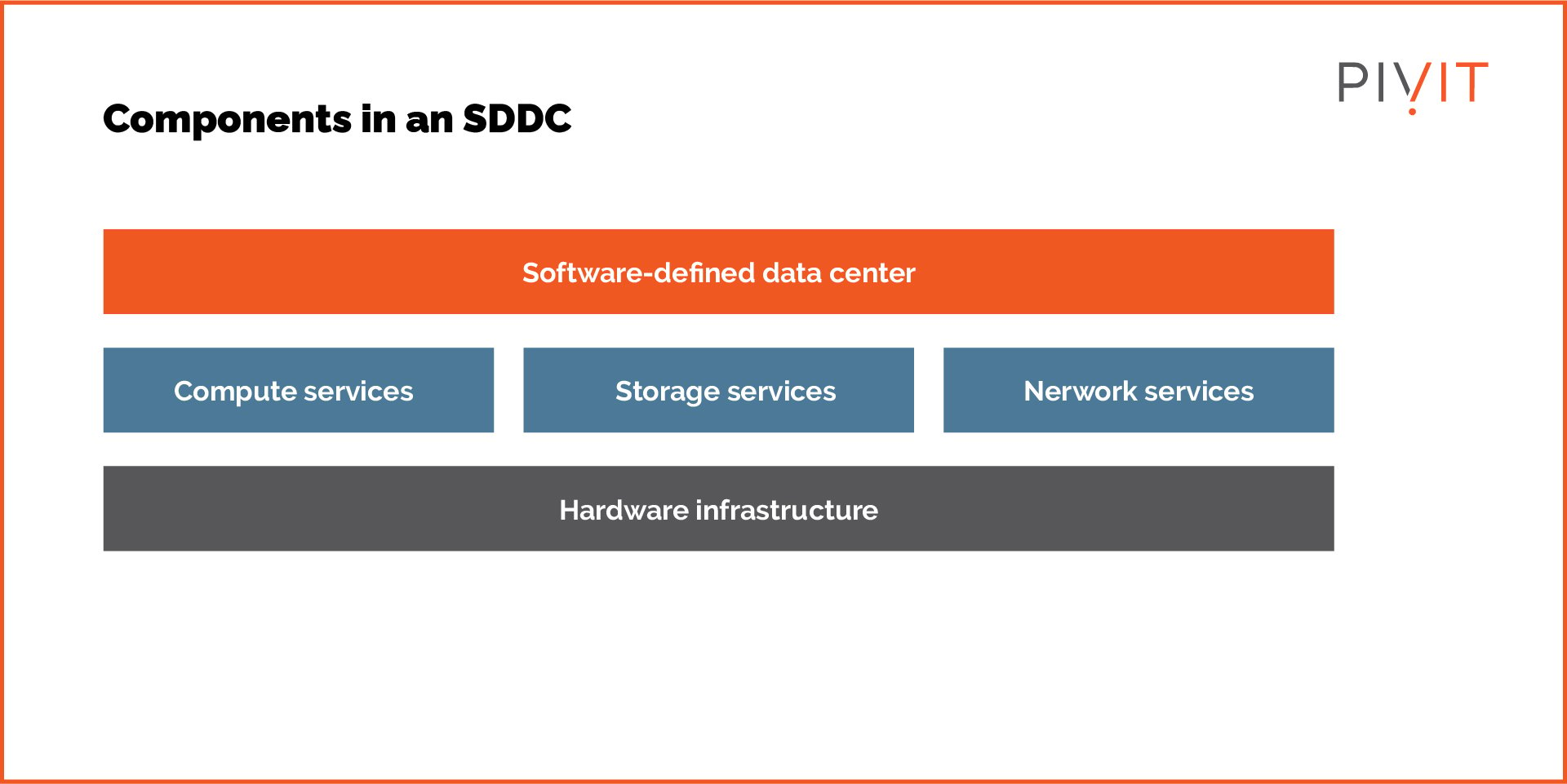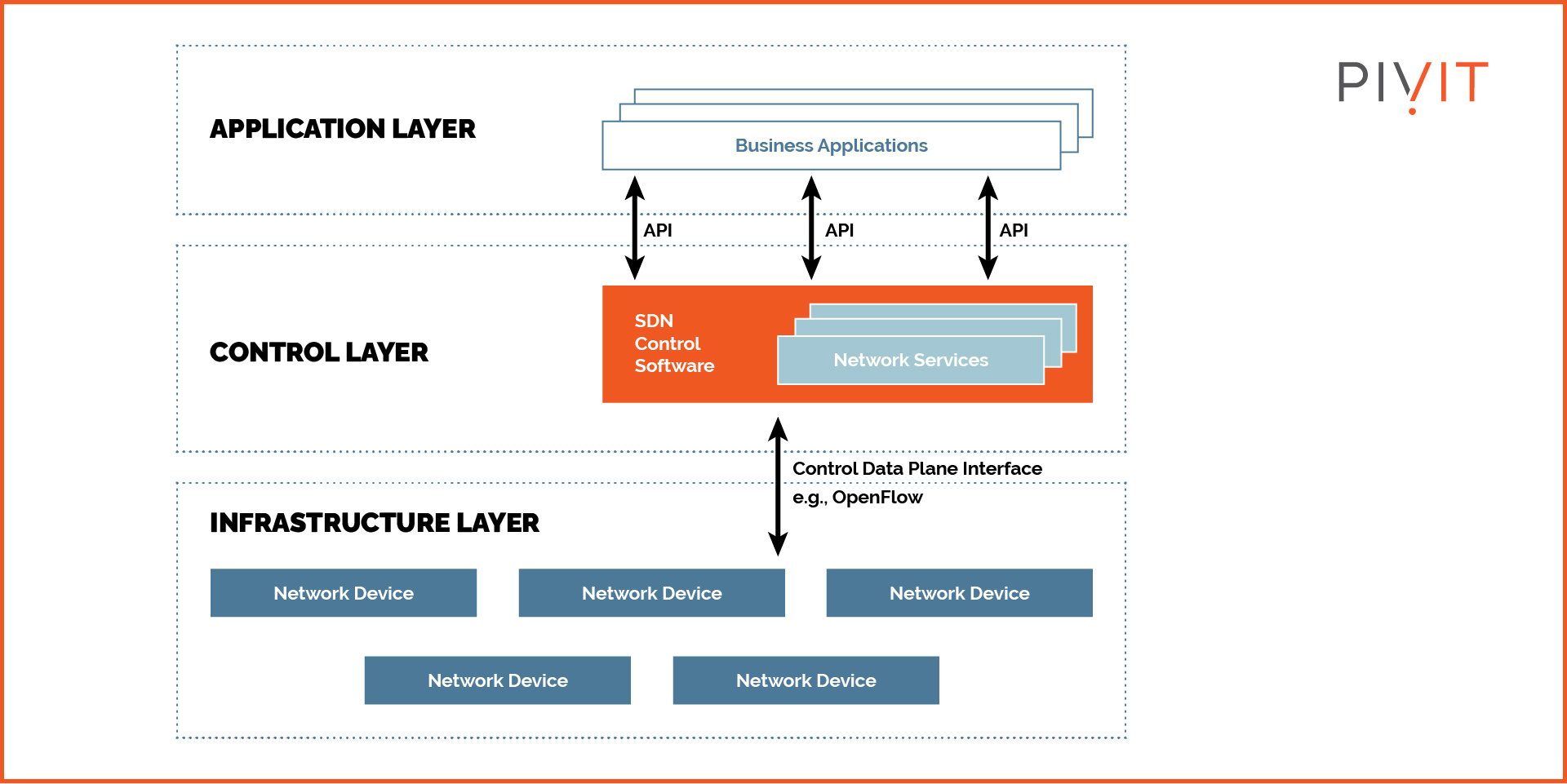How Hardware Fits Into an Increasingly Software-Defined IT Space
%20How%20Hardware%20Fits%20Into%20an%20Increasingly%20Software-Defined%20IT%20Space.png)
One of the most prominent IT trends in the last five years has been software-defined networking (SDN). Hardware dominated the IT networking sector for ages. However, with the advent of the cloud and virtualization in networking, the focus has shifted toward software.
Software-defined wide area networks (SD-WAN) and software-defined storage (SDS) are widely used in data centers today, promoting what is dubbed a software-defined data center (SDDC). The SDN market worldwide is poised to cross $32 billion by 2025, indicating that adoption is rampant.
So where does hardware fit in the new equation? Can data centers sticking with the traditional hardware-defined protocols make it in the current software-defined era? Is investing in more hardware still worth it?
In this article, we will examine the following:
- The role of hardware in modern data centers.
- A comparison of hardware and software-defined networks and data centers.
- How to solve your data center needs.
Not the article you were looking for today? Try these out:
- Why Network Maintenance Is Crucial During Natural Disasters
- Consider These Solutions as You Navigate the Engineering Talent Gap
- Why Chip Supply Shortages Could Bring Redesigns, and What It Means
Understanding Software-Defined Network (SDN)
SDN emerged in the late 2000s as a new approach to networking, where the control plane is run by software, commonly through application programming interfaces (API). In simpler terms, it relies on software for controls and provisioning, which automates these processes.
In traditional so-called hardware-defined networks, devices would control network traffic. Instead, SDN relies on software communicating with the hardware, accelerating key networking processes.
SDN shouldn’t be confused with network virtualization, as it’s slightly different.
In the latter, there are different virtual segments or single virtual networks on top of the physical network. In SDN, software defines traffic through a centralized server. Where SDN isolates control from the forwarding plane, network virtualization abstracts networking functions from the hardware.
SDN has become increasingly sophisticated. Even key network equipment manufacturers like Cisco and Juniper have embraced the technology. In addition, open-source SDN technologies are helping accelerate the adoption across data centers.
The digital transformation efforts orchestrated across different sectors of the IT industry and many other industries have also contributed to the widespread adoption of SDN, in general, and SD-WAN, in particular.
The digital transformation of data centers has largely involved moving to the cloud or adopting a cloud-like architecture, which SDN emulates perfectly.
Top 3 Benefits of SDN
To better understand why SDN is on its way to becoming the conventional approach to data center architecture, here are the benefits of the technology:
- More Control and Flexibility: The highlight benefit of SDN is that it reduces or eliminates the need for programming and configuring equipment, as the network traffic flow is controlled through a software-based controller. This allows for more flexibility in choosing network equipment vendors, as there’s a single communication protocol. The controller treats all devices equally, regardless of the OEM, which allows for better and faster control.
- Customized Infrastructure: The main difference between hardware-defined and software-defined networking is infrastructure. In the latter, it’s easier to allocate resources and change infrastructure through virtualization as per the needs of the network. The effect of this customization of infrastructure is that network availability is always high.
- Better Security Management: In SDN, it’s easier to separate security protocols for different devices and implement different levels of security. For instance, critical components of the network can have more robust security and limited access. This means that security can be easily managed for a network with varying device security requirements.
Hardware-Defined vs. Software-Defined Data Center
A hardware-defined data center (HDDC) has been common for decades. These data centers rely entirely on hardware. In contrast, an SDDC relies on technologies like SDN and SDS, leveraging virtualization and software for control, much like the cloud.
An SDDC can streamline data center management by extending the benefits of software-based control to the entire infrastructure. Whether it’s forwarding packets or storage of data, software interacts with the hardware, finding the best way to get things done. As a result, an SDDC is markedly more efficient in using its resources.
More importantly, an SDDC can also adopt intent-based networking, which automates a wide range of actions based on policy. That, in turn, improves data security and makes compliance with regulations easy.
HDDC lacks the agility that cloud-based infrastructure provides.
SDDC, on the other hand, brings that cloud agility to on-premise infrastructure. By abstracting resources through virtualization, data centers can create their own cloud. Similarly, SDDC can also enable a hybrid cloud environment reducing the physical infrastructure footprint.
Another difference between the two is cost savings. An SDDC, if done right, can optimize resource use, eliminating overprovisioning and data silos. Although these cost savings may not be immediately noticeable, they become more visible in the long run as data centers only need to add more hardware when necessary.
Does Hardware Matter in a Software-Defined Data Center?
The adoption and success of SDDC aren’t the death of hardware. Many confuse the term “software-defined” with the end of hardware. It’s important to remember that these technologies all rely on hardware when it comes to SDN, SDS, and the SDDC.

Software may control the network and storage, but it exists on hardware. So discounting hardware out of the modern data center is a doomed approach. Your entire network is only as good as the physical infrastructure it’s based on.
A software-defined approach to managing data center workloads is superior to the manual hardware-defined one that’s becoming a thing of the past. Nevertheless, modern data centers must maintain and invest in hardware to reap the benefits of software-defined networking and storage more profoundly.
In an SDDC, there are no vendor lock-ins, which frees administrators to choose equipment from different OEMs. As a result, SDDCs often inherently have multi-vendor environments. There’s more freedom to choose the hardware best suited for the needs of the data center.
How to Leverage Hardware for Success
Hardware plays a pivotal role in the success of SDDC. If you plan to take the software-defined approach with your enterprise’s data center or already have, hardware is still essential. It’s essentially the building block of an SDDC.
Today, networking equipment is more software-ready than ever, so it’s pretty easy to build an SDDC using the latest equipment. The best approach to selecting hardware for your data center is to analyze how the particular devices and their features can benefit your business goals.
Additionally, as technology evolves rampantly, investing in future-proof infrastructure is wiser. Similarly, pay attention to the lifecycle of the equipment.
How long will it last as per the lifecycle defined by the OEM? How long will the OEM provide maintenance? Answering these critical questions can help you pick the best hardware for your SDDC.
Choose PivIT for Your Data Center Hardware Needs
Depending on the size of your data center, refreshing hardware can cost thousands or hundreds of thousands of dollars. What if you could save up to 60 percent on hardware procurement? You could then move those savings to acquire sophisticated software solutions for infrastructure management.
If you’re looking to procure network equipment from major OEMs, PivIT has your back. From servers to switches to storage, everything you need to create the base infrastructure of your SDDC can be found with PivIT.
You can also find legacy equipment at a bargain, saving you considerably, especially on non-critical parts of your infrastructure.
So the next time you think of buying data center hardware, think of PivIT!



